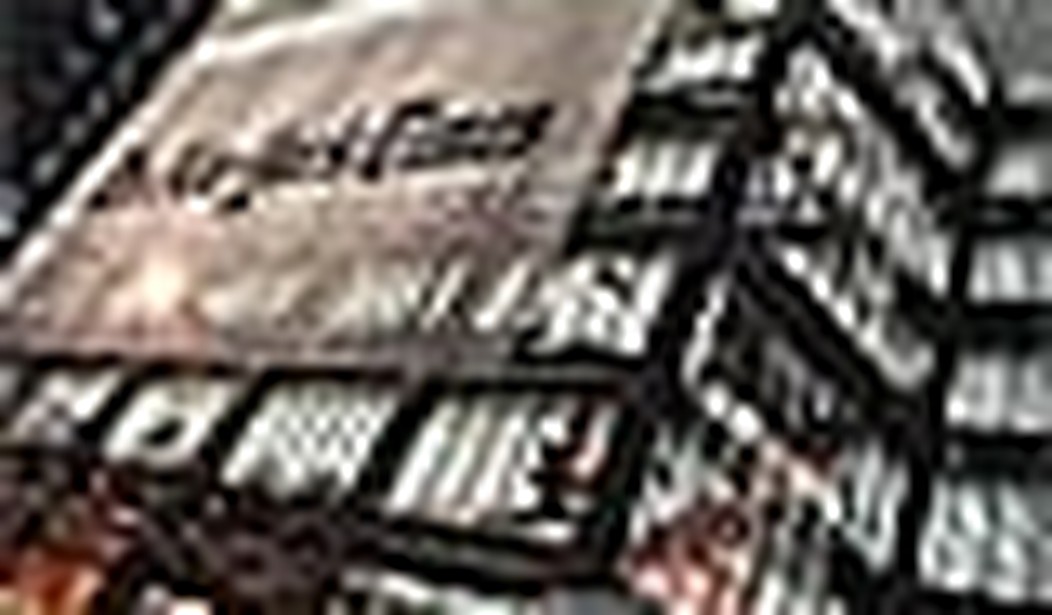The new documentary Page One: Inside the New York Times examines all the reasons why the Gray Lady faces an uncertain tomorrow.
All, that is, except one: the newspaper’s institutional liberal bias.
The film views the struggles of the newspaper industry through the Times’ lens, and few papers could serve that purpose better. The Times once set the news cycle with its daily reportage, and even in today’s mutating media world plenty of reporters still consider it their de facto Bible.
And yet ignoring the elephant in the editorial room, the liberal agenda seeping into the content, discredits Page One. And that’s a shame, since it effectively captures the dilemma facing modern journalism.
Page One starts with the headlines over the demise of many long-running newspapers. The view then shifts to the New York Times’ headquarters, a gleaming Mecca that hardly looks as if it’s burdened by fiscal concerns. But like every other paper in the country the Times is a-changing, and not for the better.
They’re slashing staff, cutting corners, and looking for ways to compete in the new media age.
It’s become a common refrain in journalism circles — will the Times survive?
The film focuses on several big stories to show how the Times handles the modern world. The biggest threat to its power might be WikiLeaks, the information dump of sensitive, and secret, documents that forced the media to re-examine what news is truly fit to print.
We watch as Times editors hash out their feelings regarding the content of those dumps, which they reluctantly decide to publish after a considerable debate. Nothing shocking here.
It’s more illuminating to see WikiLeaks guru Julian Assange deal directly with the newspaper’s staffers.
“Is journalist a word you attach to yourself?” one reporter asks Assange, clinging to the old-school notion of the term as if he were a drowning man desperate for a life preserver.
There’s little in Page One to burst the bubble of those who worship at the paper’s altar. We see skeptical reporters discussing how to cover tough assignments, and watch young scribes sign up for dangerous gigs like a stint at the Baghdad bureau. The film follows the media desk with the most scrutiny, a shrewd choice given the desk has to indirectly cover itself and its own survival.
But what about the news meetings where the potential bias could seep into otherwise hard news? We don’t get much of that here.
What’s missing beyond the obvious bias debate is a shout out to the blogs which keep newspapers honest. Yes, your friendly neighborhood blogger can’t embed in a war zone, although some, like Michael Yon, do just that. And where would news aggregator sites be without a paper like the Times to provide the necessary links?
But bloggers can hold reporters feet to the fire when their accuracy falters. They also bring unique skill sets your average reporter and his editor might lack. Who stood a better chance of understanding the nuances of Twitter in the WeinerGate scandal, a general assignment reporter or a blogger who works the social media beat because it’s his passion?
Page One touches on some of the newspaper’s bigger headaches, from the Jayson Blair scandal to reporter Judith Miller’s reportage on weapons of mass destruction in the run-up to the Iraq War. Naturally, the former is dealt with briefly, and the latter lets some talking heads attack the paper from the left.
If there’s a breakout star in Page One it’s David Carr, the husky-voiced media reporter who is the paper’s loudest defender and most charismatic talent. He’s a curmudgeon and a bright wit, a tireless worker and a recovering drug addict. The newspaper is his life, and his full-throttled defense of it can’t help but stir one’s emotions.
Carr embodies the old-world journalist trying to adapt to our Facebook age, admiring some of the newer wrinkles but bemoaning them all at once.
“Is that a bridge to the future? Oh, wait. It’s the gallows,” Carr cracks when news of the first wave of iPads hits.
And then we get the occasional comment from The Nation’s editor, Katrina vanden Heuvel.
“I think we’re in a dangerous moment in American journalism,“ vanden Heuvel says in summing up the Times’ plight. It’s a sure sign of the film’s own biases that it would call upon such a far-left scribe as a voice of reason.
That doesn’t diminish the bigger messages afoot. Even those who deride the New York Times for its biases will acknowledge the role large newspapers play in the media landscape.
Page One raises the key issues facing journalism today that will affect the way consumers get news in the next decade. If the film had tackled the paper’s ideological blinders, a more accurate version of the problem would have emerged.









Join the conversation as a VIP Member